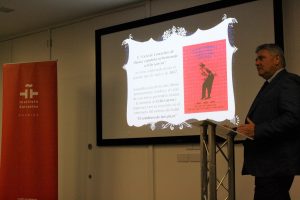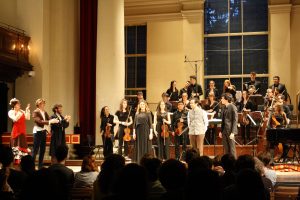The hidden story of ‘The three-cornered hat’ by Spanish composer Manuel de Falla
On the occasion today of the centenary of the premiere of the ballet ‘The Three-cornered Hat’ (22nd July 1919), the research, carried out in the last two decades by the Spanish writer, musician and teacher Antonio Hernández Moreno, reveals that almost a third of the ballet score by Manuel de Falla was composed and orchestrated by composers Maurice Ravel and Ottorino Respighi.
The researcher made this information public at a lecture hosted by the Instituto Cervantes in London, hosted at the Europe House. The writer found in the Houghton Library (Harvard University) an unknown manuscript score of the ballet complete music on piano version under the title ‘Le Chapeau tricorne’. The study demonstrates, once analysed the calligraphic features and modifications made on the previous work composed by Falla under the title of ‘The Governor and the miller’s wife’, that Ravel and Respighi arranged, finished and orchestrated the work that would become the final score of the ballet ‘The Three-cornered hat.’
In June 1916, the Russian impresario Sergei Diaghilev (in gratitude for the aid received by King Alfonso XIII in the release of Nijinsky from a concentration camp at the beginning of the World War) agreed in Madrid with the playwright Gregorio Martínez Sierra to adapt the famous novel by Pedro Antonio de Alarcón, into a plot for a Spanish ballet to be premiered by the Ballets Russes. Manuel de Falla was the chosen composer by Diaghilev.
After a first failure attempt to premiere the ballet in Rome at the beginning of 1917 with Spanish ‘bailaores’, and after a serious disagreement with Nijinsky – already released and in Spain- to be represented with Pastora Imperio; Diaghilev finally hires the young and brilliant Spanish dancer Félix García, to teach the Spanish rhythms to the members of the company and also play the main role of the ballet. Felix Garcia, was not only a musician but also a very gifted ‘bolero’ or ‘bolerist’ (name given to a virtuoso dancer specialised in Spanish national dances), and not an Andalusian ‘bailaor’, as it was believed until now.
At that time, the Diaghilev’s Ballets Russes was stuck in Spain because of the World War, so after a rugged performances in Lisbon and a tour through some Spanish cities, and almost become dissolved, Diaghilev managed to release it from the blockade thanks once more to the diplomatic efforts made by King Alfonso XIII, which finally allow Diaghilev and his company to travel to London in August 1918.
After a long season at the Coliseum Theater in London, the company moves to the Alhambra Theater, where Diaghilev has already planned to premiere ‘The Governor the miller’s wife’ along with another Spanish character ballets. But new setbacks and delays, including the never finishing of the final ballet score by Falla, caused Diaghilev to secretly hire the composers Ravel and Respighi services to finish it. The replacement of Felix and Sokolova replacement in their main roles, and the confine of the Spanish dancer in a mental hospital did not prevent the ballet, now retitled ‘The Three-cornered Hat’ was premiered ‘in extremis’ on the last day of the season performance. Picasso designed sets and costumes, making a pencil drawing of Felix and Sokolova during a rehearsal, the only surviving image of the Spanish dancer.
Hernandez-Moreno establishes as well a parallel between what happened to Felix Garcia and the final destiny of the legendary Russian dancer Vaslav Nijinsky. The research also concludes that the orchestral masterwork ‘Bolero’ by Ravel was inspired, motivated and secretly dedicated to Felix. The results of this study have been published in a novelized way in the book ‘Thirty castanets for London’ that will be coming soon in weeks.
On the other hand Hernandez Moreno has promoted and managing a Spanish music and dance festival for three years in homage to Félix García, with the aim of honouring his memory and trying to erase the unfair nickname of ‘Felix the Mad’, maliciously or wrongful named for several decades.
The passage of Diaghilev’s Ballets Russes through Spain claimed two victims: Nijinsky, who lived the rest of his life among several mental sanatoriums in Switzerland; and Felix Garcia, who spent almost twenty years inmated and forgotten in a mental hospital in Epsom (England) until he died in 1941, where his rest remains in an abandoned cemetery.






